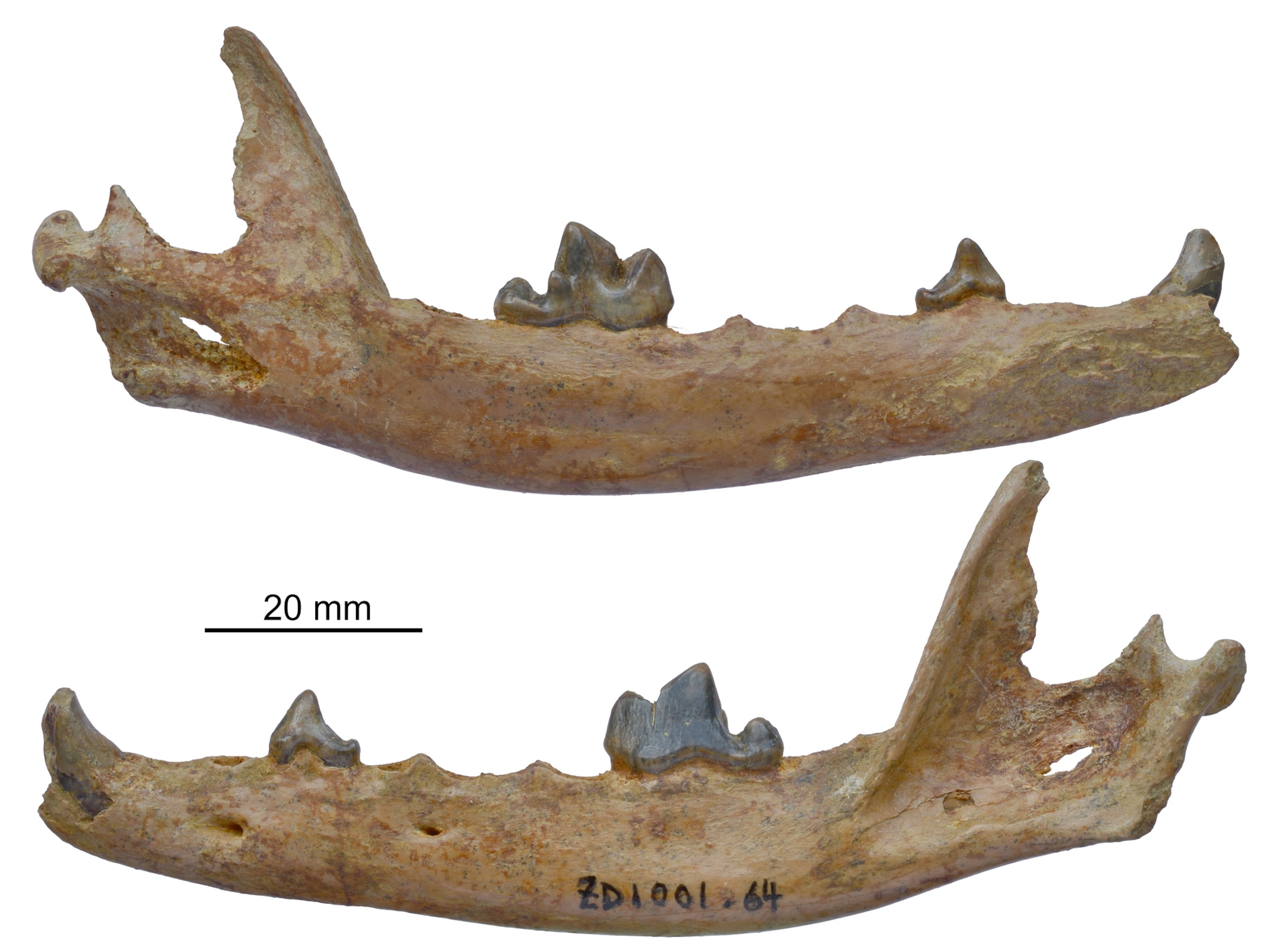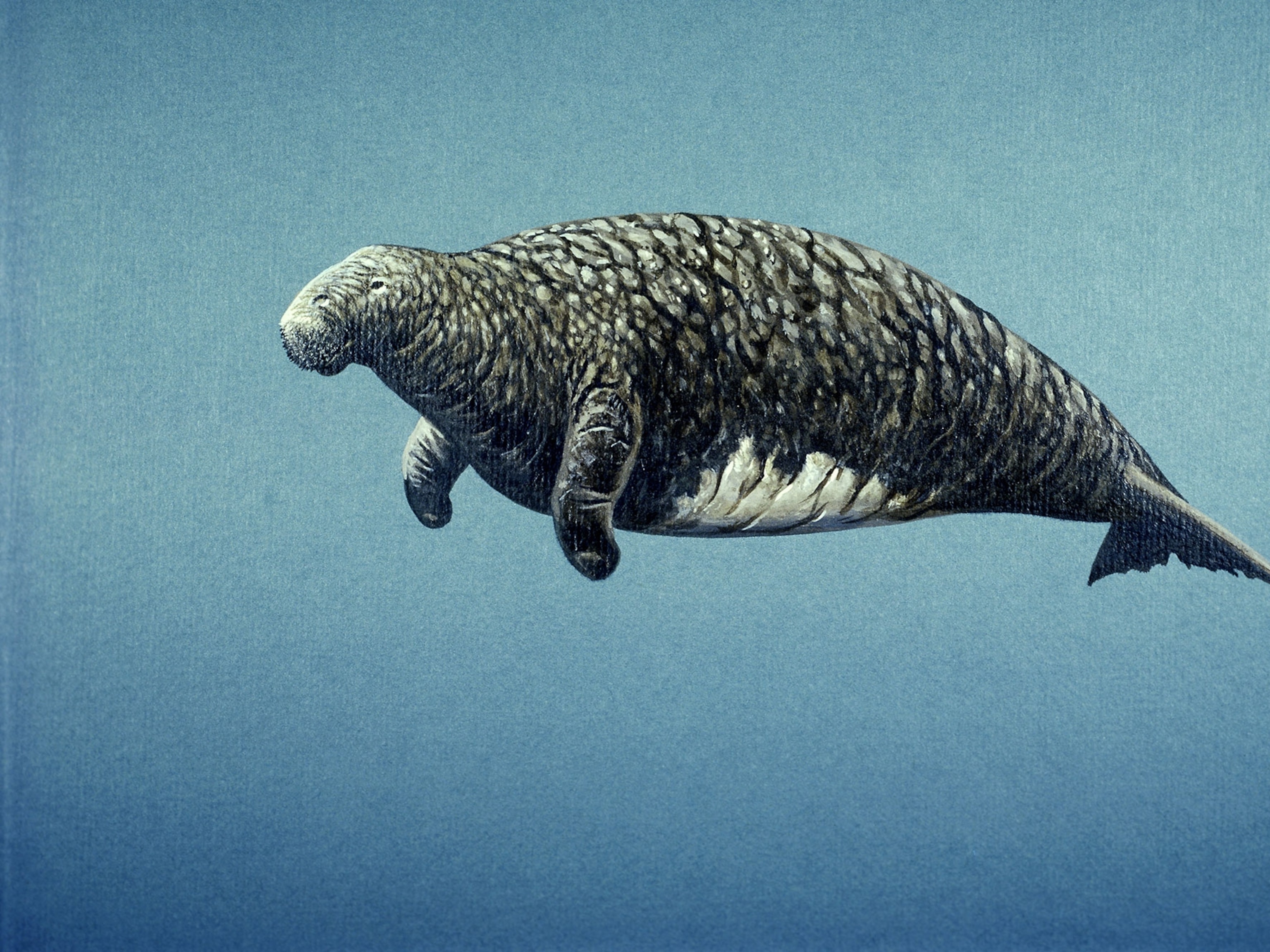
Extinct Fox Species With Supersharp Teeth Discovered in Tibet
The discovery of the ancient, sharp-toothed predator may support the theory that many polar carnivores originated in Tibet.
An extinct species of "very carnivorous" fox with supersharp teeth once roamed the frigid Tibetan Plateau, a new study says.
The fossils of the newly identified Vulpes qiuzhudingi, which lived 3.60 to 5.08 million years ago, in the Pliocene period, are the oldest arctic fox remains ever found. That could make them the earliest known ancestor of today's arctic fox (Alopex lagopus), which ranges throughout the northern poles. (Also see "Arctic Foxes Put Eggs in 'Cold Storage' for Lean Times.")
The discovery also supports the "out of Tibet" theory, which argues that the plateau acted as a "third Pole" where cold-adapted predators lived until they migrated to new lands at the beginning of the Ice Age.
Between 2006 and 2012, scientists unearthed three jaw fossils of the ancient predator while digging in Tibet's Zanda Basin and Kunlun Mountains.
In 2010, the team found an exemplar fossil of a jaw still studded with teeth. "I first uncovered part of the lower molar, and immediately I knew it was some kind of a dog," said study co-author Zhijie Jack Tseng, a paleobiologist at the American Museum of Natural History in New York City.
What Does the Ancient Fox Say?
The fossils were set aside until a few years later, when Tseng and colleagues examined them and discovered the teeth bore a "striking resemblance" to those of the arctic fox, according to the study, published June 10 in the journal Proceedings of the Royal Society B.
For one, the fossils' lower molars lack cusps and are sharper than those of other fox species. This adaptation—which allowed the prehistoric predators to slice into prey—is a clear sign of what's called a "hypercarnivore," or a carnivore that eats mostly meat. Omnivorous foxes have bumpier, duller molars better suited for chewing plants, insects, and small vertebrates, he said.

The extinct fox would've had plenty of meat to choose from: Other fossils found near the remains in Tibet include potential prey species, such as shrews, pikas, voles, and squirrels—all small mammals that today's arctic fox would eat. (See video: "Arctic Fox Raids Polar Bear Kill.")
Eating mostly meat makes sense for polar animals, in part because of the taxing demands of living in such icy cold environments and the scarcity of other food sources, Tseng said. That's likely why, in addition to the arctic fox, other northern carnivores, such as polar bears and gray wolves, are highly predatory.
Polar animals in general also tend to be bigger, possibly because beefier animals lose precious heat more slowly than smaller animals do.
That's also the case with the newfound fox, which was likely 20 percent bigger than the modern-day arctic fox. It was about the size of a male red fox (Vulpes vulpes), the biggest known fox species.
Link Olson, a mammal biologist at the University of Alaska Fairbanks, called it an "interesting hypothesis," but he's "not convinced of the close relationship with the arctic fox."
"As the authors briefly note, this could well be yet another example of convergence"—when two species evolve similar adaptations, Olson said by email.
Olson noted that canines' skulls are "notoriously plastic, even among living species; consider how much variation we see in the heads of domestic dog breeds versus cat breeds."
He added that a rigorous analysis, including a closer look at the fox family tree, "would make for a more compelling case."
Out of Tibet?
To Tseng, the discovery of the ancient fox is more proof for the out of Tibet theory. It goes like this: At the end of the Pliocene, about 2.6 million years ago, it was considerably warmer in the Arctic and colder in Tibet, where a host of animals evolved to cope with the elements. (See a prehistoric time line.)
When global temperatures dropped at the start of the Ice Age, these cold-loving Tibetan animals may have chosen to "step down from the plateau and spread northward toward the vast expanse of Russia, Siberia, and northern Canada, where they became characteristic Ice Age mega-mammals," Tseng said. (See "Pictures: 'Remarkable' Ice Age Fossil Cache Found.")
Indeed, Tseng and his colleagues have discovered that other species, such as the extinct woolly rhinoceros, the hyena, the snow leopard, and now the arctic fox, share roots in the Tibetan Plateau.
University of South Carolina carnivore paleontologist Adam Hartstone-Rose agrees that the "Out of Tibet" theory is a plausible one, noting that modern-day Tibetan animals—such as the yak—resemble Arctic animals.
"This fox fits in that scheme. Obviously it's a little less sexy than the big carnivores, but it's a neat little thing," said Hartstone-Rose, who has studied extinct foxes but wasn't involved in the new study.
"It's exciting to see as [Tseng's group] fleshes out this theory species by species."





